 | E-mail to Birds Korea |
 | KWBS |
in the Region
 | The Oriental Bird Club |
 | BirdLife International (Asia) |
March
March often contains a mixture of dry, cold days (with night temperatures down to 3-4°C, and highs between 10 and 15°C) and occasional milder showery, windy weather.
Most wintering species are still present, but in progressively reduced numbers. Falcated Duck regularly display on reservoirs and ponds, while small numbers of Baikal Teal remain at key sites. Migrant cranes peak in the northwest, as can the Ancient Murrelet migration along the east coast. Small numbers of shorebirds, including early Little Ringed Plover and flocks of Far Eastern Curlew arrive, plus Siberian Buff-bellied Pipits and the first leucopsis White Wagtails. Hundreds of Rustic Buntings, Dusky and Naumann’s Thrushes move north-east out of China and Japan, along with smaller numbers of raptors and occasional influxes of Japanese Waxwing. Bramblings and Siskins often form large flocks at key migration points. Sunny days tempt Rustic, Meadow, and Yellow-throated Buntings into song, and numbers of Oriental Stork, while still very small, peak at Seosan.
Rare finds in March in recent years have included Red-crested Pochard, Yellow-bellied Tit, and Red-throated Thrush. Careful searching through gull flocks may reveal taxa like Pallas’s Gull, barabensis, cachinanns, or smithsonianus. National firsts in March include Bar-headed Goose in 2003, European Robin on Hong Island in 2006, and Bonelli’s Eagle on Ui Island in 2007.
(The following records are a compilation of our own sightings and records sent in by other observers. As well as being posted on the Birds Korea website(s), selected records are also forwarded to other Korean-language birding websites; records of threatened species are arranged and forwarded to Birdlife International and national authorities when appropriate; flag images and records are passed to bodies responsible for their coordination throughout the flyway; and all records sent to us are used to compile annual reports and to support the evolving understanding of the status of many of Korea’s birds.)
Gageo Island, March 31
A cooler day, as the wind swung round from the SE to the N, and low cloud covered the higher parts of the island. Black Woodpigeon survey effort was therefore again confined to 1-Gu and the Back-trail. Despite this, 51 species logged – the highest number to date this year on the island. Apart from Black Woodpigeon (2 heard), all the other species of note were singles: singing Long-tailed Shrike, a Eurasian Woodcock, an Intermediate Egret, an Asian House Martin, a Grey Bunting (the second in only four days), and.an Asian Stubtail (the personal first of the spring, and the 86th species recorded by survey work on Gageo in 2009).
Gageo Island, March 30
A milder day, with warm sunshine and a high of 12C. Only limited time in the field, all in 1-Gu, where the obvious highlights were 2 Bohemian Waxwing (perhaps a first record for Gageo?), the personal first Pacific Swift of the spring, a Pallas’s Reed Bunting in the quarry, and probably 15 Red-flanked Bluetail in the gardens.
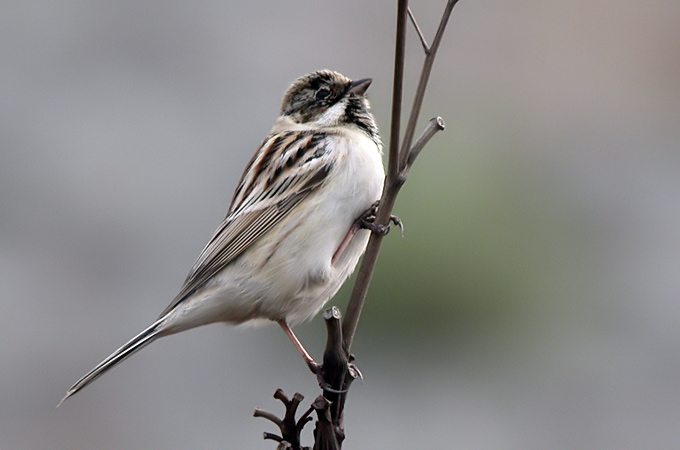

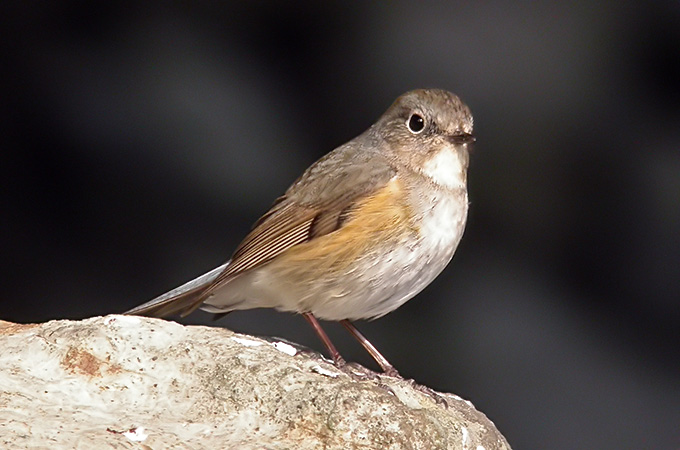
Gageo Island, March 29
Long sunny periods, but still a chill in the wind. Again only a short time spent in the field, counting birds along the 1-Gu circuit. Birds of most note were the apparent “return” of February’s Dusky Warbler, the personal first Grey-backed Thrush of the spring, and an interesting Second-winter gull, that seemed to show several characters (e.g. head shape, white-headedness, bill shape with lack of strong gonydeal angle and colour, covert pattern etc), combined more suggestive of a pale-end barabensis (if such exists!) or a dumpy eastern cachinanns than the more usual taimyrensis (8) or mongolicus (2) that were also present mixed in with 300+ vegae. In addition, the quarry and area near the dump held 10+ Daurian Redstart and 15 Siberian Stonechat, including several apparently tired and rather approachable individuals.

(Comments from experienced observers welcome), Photo © Nial Moores

(Comments from experienced observers welcome), Photo © Nial Moores
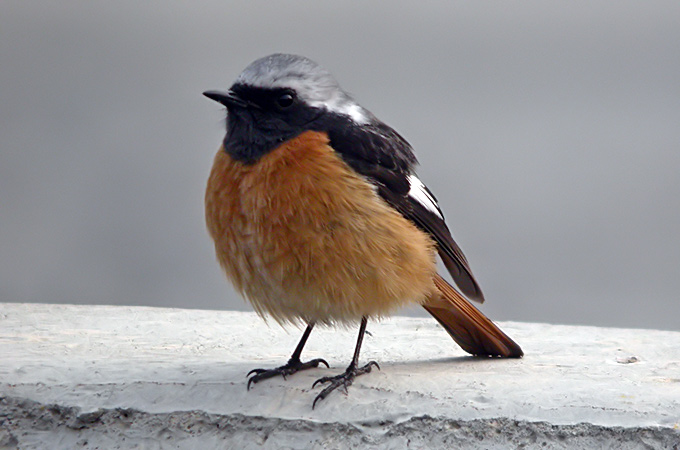
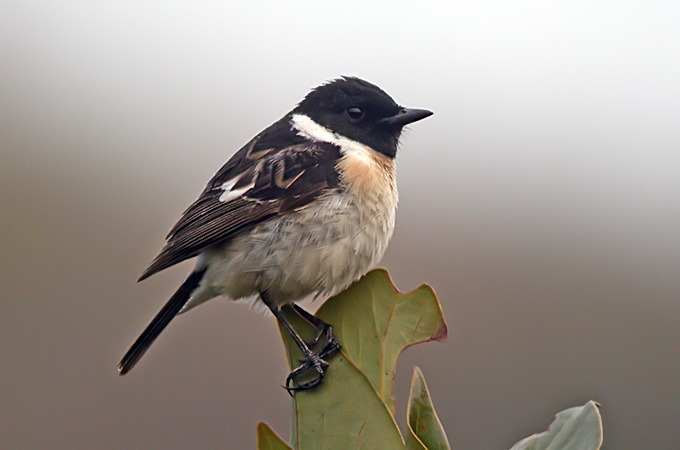
Yanggu x wetlands and farmlands, March 29 & 30
I did a bird survey along the river in Yanggu on Saturday March 28. Some early spring breeding behaviour included Grey Herons in the breeding site, and Little Ringed Plovers doing territorial flights over the gravel and sand banks in the river. Numerous Grey Wagtails and White Wagtails Motacilla alba leucopsis were present. I also saw a Siberian Stonechat, a Barn Swallow and a White-cheeked Starling. The starling flew to a tree when I got too close to it and was subsequently attacked by a Eurasian Sparrowhawk. The starling was lucky and got away. There were still a few Common Mergansers and 2 White-tailed Sea Eagles in the dam area. Ove thirty Common Teals were on one of the weirs with a pair of Mandarin Ducks and a Spot-billed Duck. Vinous-throated Parrotbills were seen in pairs in the few remaining grassy areas along the river. Most of the grass was burnt this winter, unlike previous years.
On Sunday March 29, I walked over the hills to the east of Yanggu Eup and then back around the river. In the hills there were Goldcrests, Great Tits, Marsh Tits and Coal Tits. I saw a pair of Marsh Tits inspecting a nest hole in a large old pine tree at the top of the ridge. There are not many old tree around that are big enough to form hollows. At the base of the hills there were ltos of Yellow-throated Buntings foraging in the fallow rice fields. Other birds included Daurian Redstarts, Bull-headed Shrikes, Dusky Thrushes and Vinous-throated Parrotbills. There were several hundred White-fronted Geese foraging in the rice fields along the river. I saw them fly to the river to bathe. There was a lot of splashing, dipping and flapping as they enjoyed their bath. I saw some of them roll over in the shallow water to get their backs wet. It was rather comical to watch them. Then, just before I got home I found a small flock of White-fronted Geese foraging in a rice field. When I looked at them with my scope to count them I notice one leucistic bird.

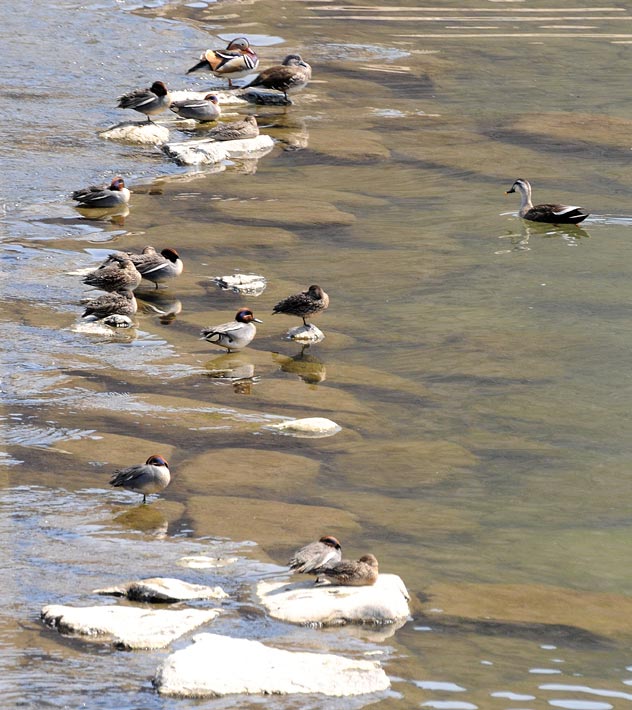
Photo © Barry Heinrich

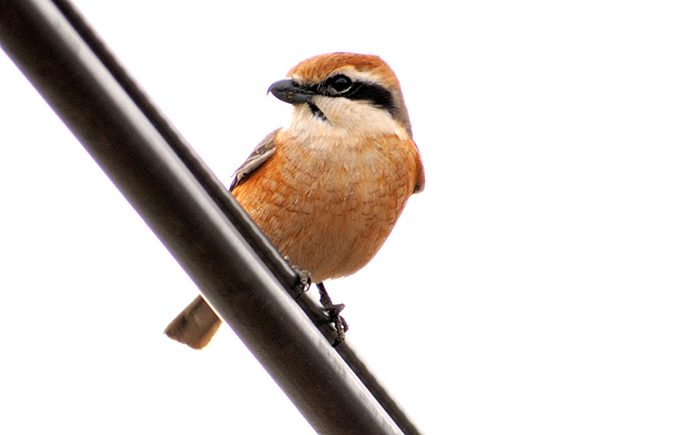



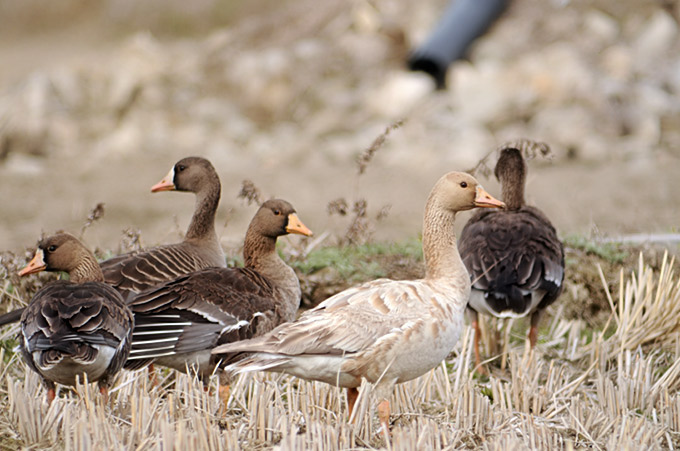

Northeast Coast, Hado-ri, Seongsan-po, Jeju island, March 29
An overcast and chilly day for a scooter/birding trip along the northeast and east coast of Jeju. At a small beach a few kilometres past the wind farm at Haengwon-ri, 6 Little Ringed Plover scuttled along the shoreline. On every exposed rocky shoal along the coast, groups of 10-15 Temminck’s Cormorant could be seen drying their wings, with several Pelagic Shag mixed in among them. Five Pacific Reef Heron, 4 Little Egret, 2 Pacific Loon, and 3 Black-throated Loon were also seen along the north coast.
At Hado-ri, 1 Bar-tailed Godwit stood on a rock near the shore.Three Black-faced Spoonbills huddled with several Grey Heron on a group of rocks, while an Osprey patrolled overhead. The duck numbers have decreased since January. Five Northern Shoveler, about 100 Spot-billed Duck and Mallard, a dozen Common Shelduck, about 400 Gadwall, perhaps 300 Eurasian Wigeon, 8 Pintail, about 20 Tufted Duck and a similar number of Pochard were seen. Seven Moorhen and about 150 Coot were mixed in among the ducks. One Hawfinch was seen in a pine tree, and a single Grey-faced Bunting moved among the reeds by the water’s edge.
Near Seongsan, a Siberian Stonechat perched in a field of rapeseed flowers, and groups of Barn Swallows flew low aerobatics. Ten Bar-tailed Godwit and 30 Common Sandpiper worked the tidal sand nearby.
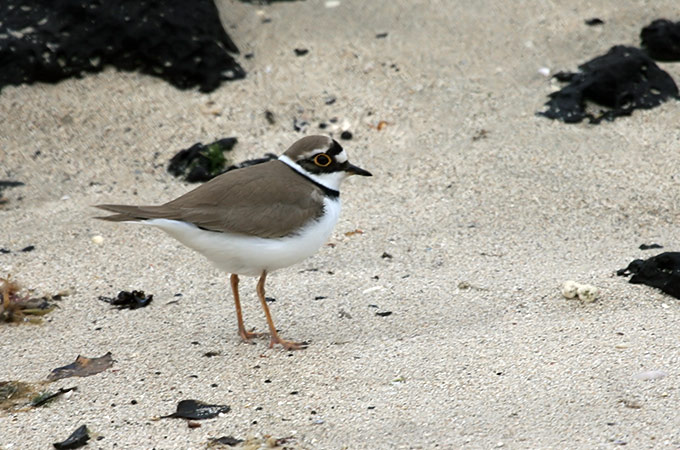
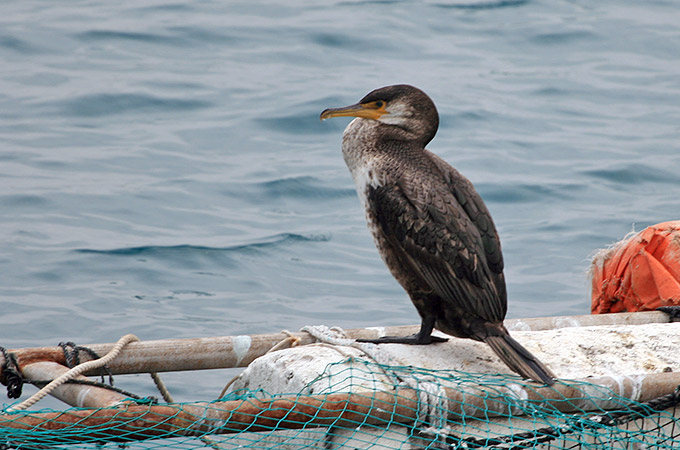
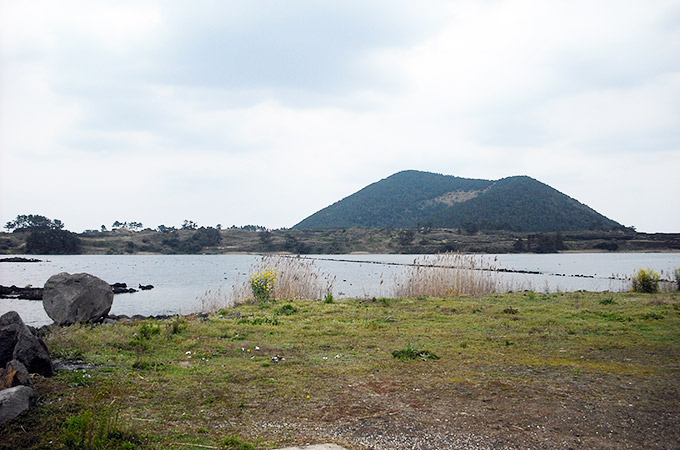

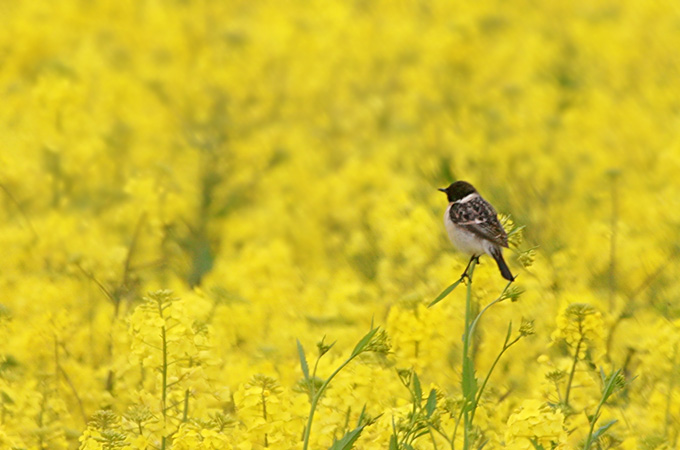
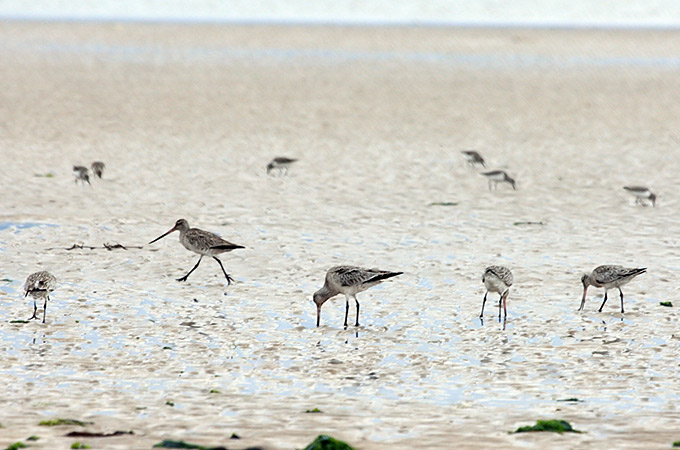
Songdo, March 29
Spring today ushered in a Siberian Stonechat, Red-flanked Bluetail (hawking insects like a flycatcher), the first column of modesta Great Egret, with 9 exquisite Black-faced & 1 Eurasian Spoonbills, which floated onto the lagoon at sunset: they were careful to avoid the 20 or so Mongolian Gull that have commandeered the artificial islet.
In the few surviving trees, a late Dusky Thrush, Common Buzzard and 5 or 6 Olive-backed Pipits.
On the threatened final mudflat, the roll-call of shorebirds is unchanged from last week, save for an influx of perhaps 40 Eurasian among the Far Eastern Curlews and extra numbers of Kentish Plover, which panicked into a delicate flock. Also present, a few Common Shelduck, Saunders's Gull & c.50 Great Cormorant. 51 Eastern Oystercatcher headed to roost at Oido, but not a single bird put down on the now drained and disturbed brackish area- which was always previously an automatic refuge for large numbers of waders at high tide.





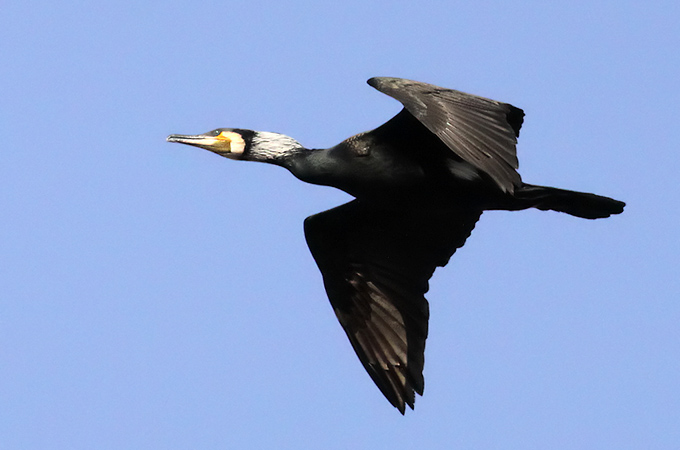
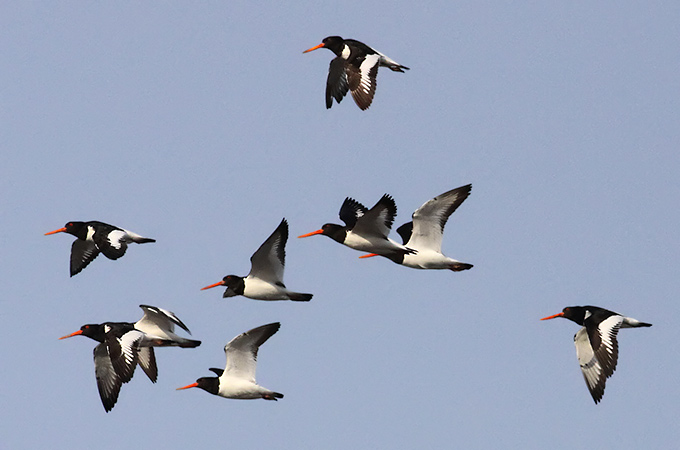
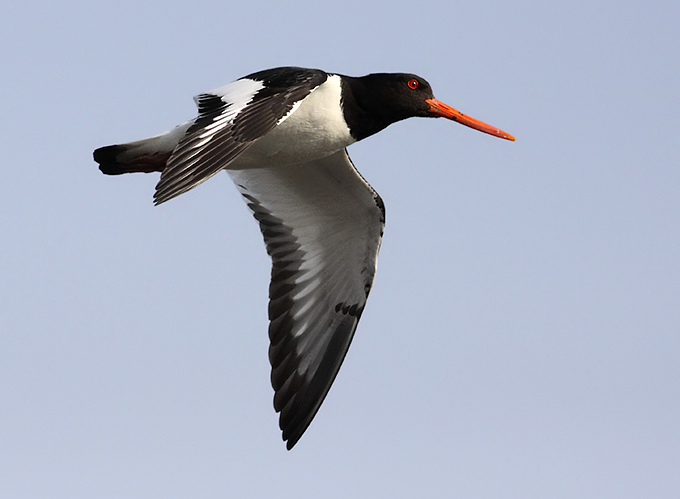
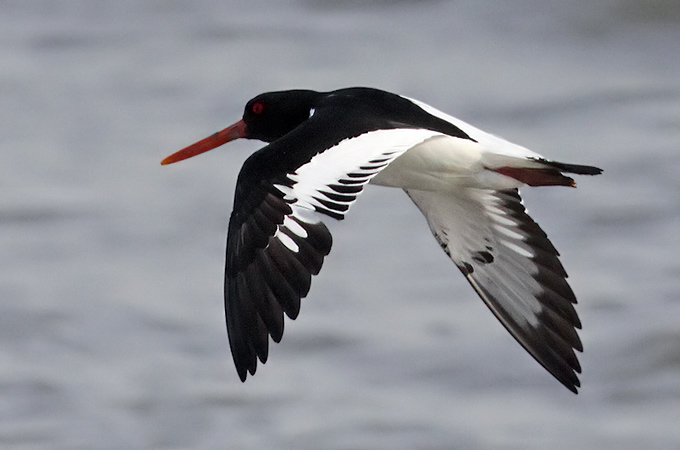
Namhansanseong, March 29
It turned out to be a wonderful spring day. I was surprised, though, to see some snow still left on the ground. Up past the South Gate there seems to be some major reconstruction on the fortress walls until August. I did manage to get some good views of 6 Siberian Accentor, 2 Brown Dipper, 7 Grey Wagtail, a Common Pheasant, a Japanese Pygmy Woodpecker and various assortments of Tits, Eurasian Nuthatches, and Goldcrests.
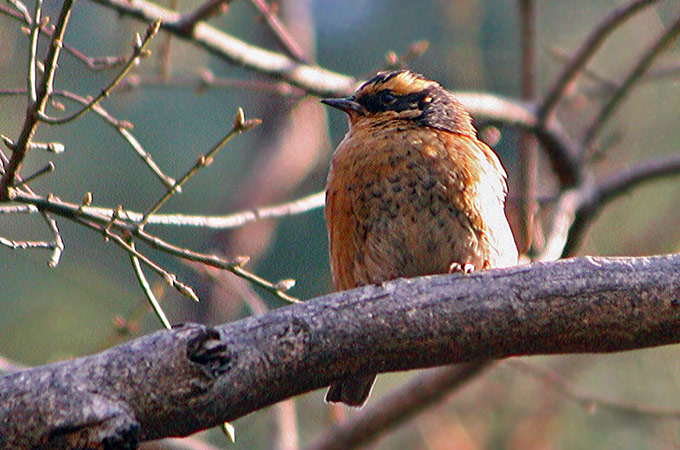

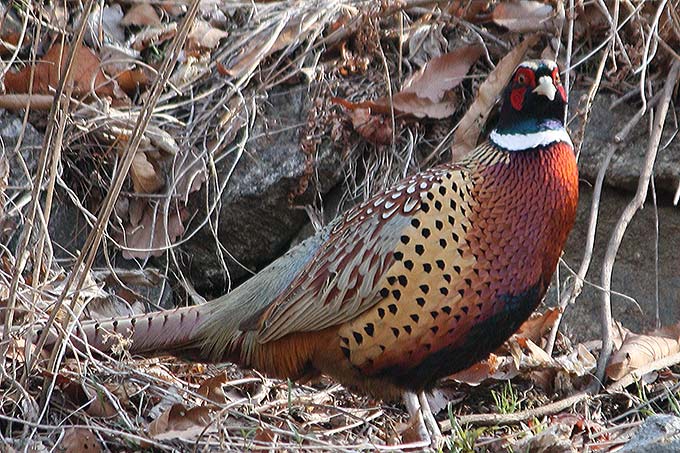
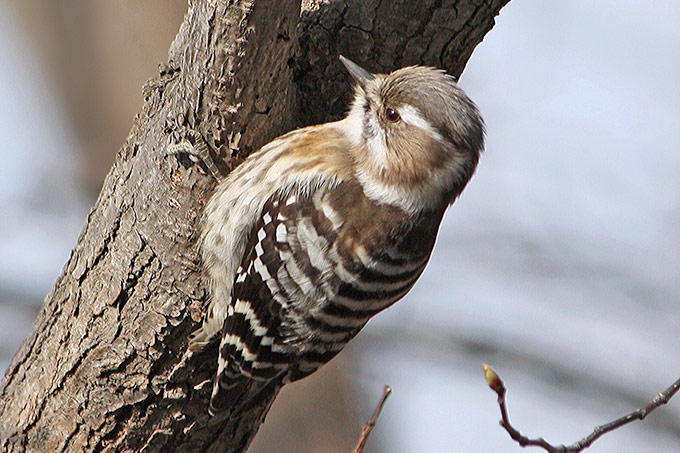
Gageo Island, March 28
A long day in the field surveying Black Woodpigeon at the “top”, in forest north of the island peak (advertised as 639 m but in reality a more humble 575 m), with more than half-a-dozen heard, several seen and at least one well-recorded. Few other birds in the same area, although Grey Bunting (one or two, including a full adult male in sub-song) and a single Grey-faced Buzzard (the personal first of the spring) were both noteworthy.
Gageo Island, March 27
A few hours in the afternoon checking for migrants in the very south of the island found increased numbers of Siberian Stonechat (16) and leucopsis White Wagtail (30), and new in two Little Ringed Plover, one Common Kingfisher, 12 Little Egret, and the personal first modesta Great Egret (5), Red-rumped Swallow (2) and Red-throated Pipit (1) of the spring - the latter two species were both personal firsts for the spring together before, on March 27th, 2003!
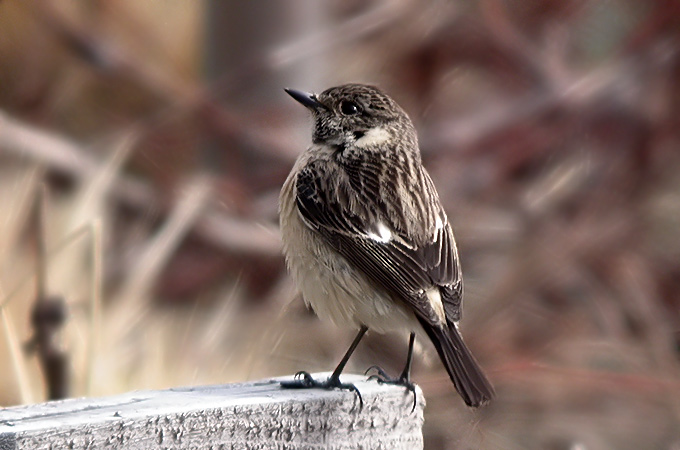

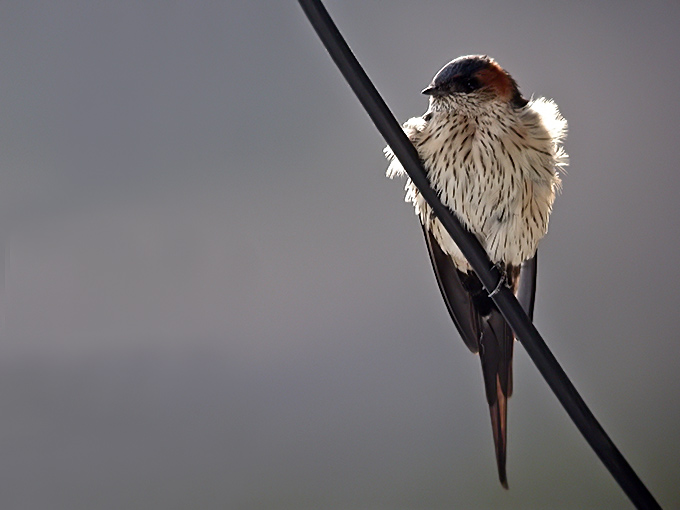
Gageo Island, March 26
Again in cold, clear sunshine a gruelling 12-hour hike around the island in search of Black Woodpigeon. In total some 15 found, with several giving wing-clapping displays. Other numbers of note included over 200 Grey Starling, 30+ White's Thrush (including three in song), 22 Daurian Redstart between I-Gu and 2-Gu, 12 Siberian Stonechat and 14 Red-flanked Bluetail - more than a hint that spring migration is starting to gear up. New in species included Common Snipe (1), while highlight for the day was a very secretive Long-tailed Shrike at 2-Gu.
Gageo Island, March 25
In cold, clear conditions a search for Black Woodpigeon around the south of the island (two heard). The 6-hour hike produced a few surprises, including seven Mandarin Duck on the sea, a Chinese Blackbird and a heavily streaked thrush (presumably a Dark-throated), 14 Red-flanked Bluetail in the afternoon, and biggest surprise of all presumably Gageo's first Great Bittern, flushed at very close range in dense woodland at 300m!
Gageo Island, March 24
In rather cold (max 6C) and windy weather, very few birds on the crossing from Heuksan (best being a Eurasian Curlew and a half-dozen Ancient Murrelet), and even fewer birds on the island, with birds of most note being 4 Siberian Stonechat, 2 Barn Swallow and the personal first Korean Bush Warbler of the spring.
Heuksan Island, March 23
A few hours in the field under a cold overcast in the east of the island produced a few more birds, with a Glaucous Gull in the harbour, a group of 10 Rook and one Daurian Jackdaw, 2 or 3 Japanese Lesser Sparrowhawk, a male Red-billed Starling, and most surprising so far south a white-headed Long-tailed Tit, a subspecies apparently recorded on the island sometimes in winter. Also via National Parks Senior Researcher Park Jong-Gil, two Asian House Martin were with a flock of 60+ Barn Swallow over the small wetland today too.
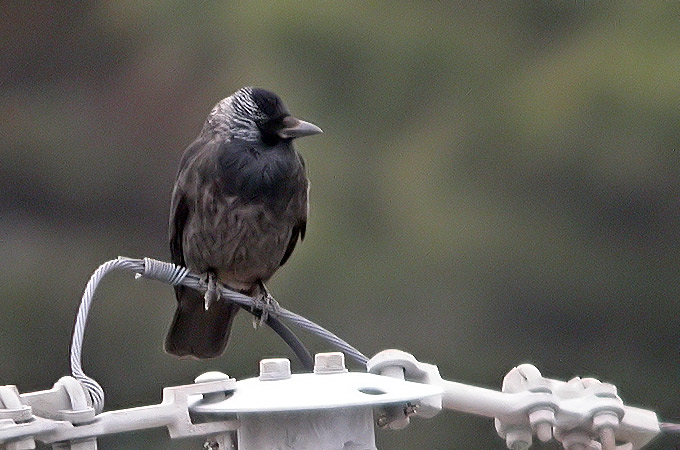
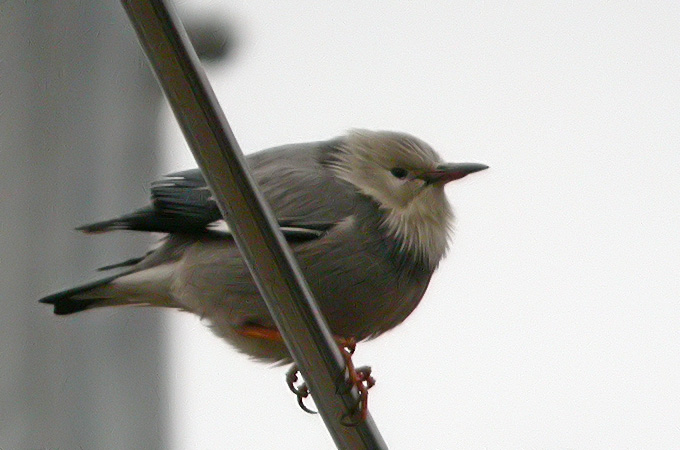
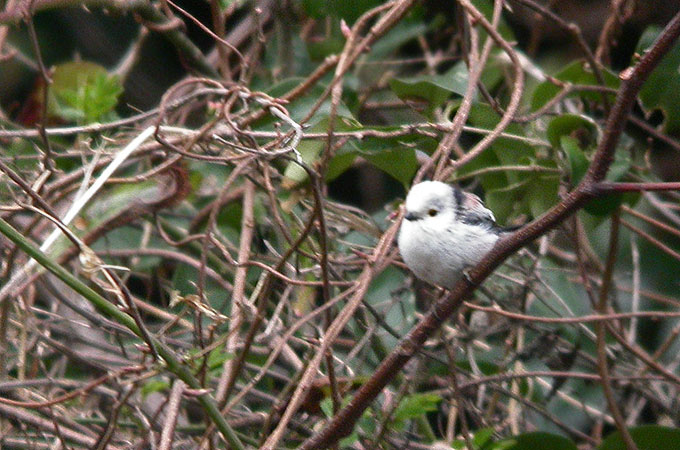
Cheolweon, March 22
Cool cloudy spring weather at Cheolweon after rain showers in the early morning. The Red Crowned Cranes have all left, but about 1000 White-naped Cranes were tallied; among these were 2 Hooded and one Common Crane. Other birds included several thousand White-fronted and several hundred Bean Geese, many Rustic and Yellow-throated Buntings, a few Pallas’ Reed Buntings, several Hawfinches, Grey-capped Greenfinches, a few Common Buzzards and Cinereous Vultures, a single Eurasian Sparrowhawk, 2 Chinese Grey Shrikes, a few Dusky Thrushes, several calling Far Eastern Skylarks, a small flock of Azure-winged Magpies and 2 Hoopoes. Several Water Deer in the fields: one bathing in a hot spring and another grazing among geese. Vestigial highlight was the tracks (across a soft dirt-bank) of an Amur Leopard Cat.

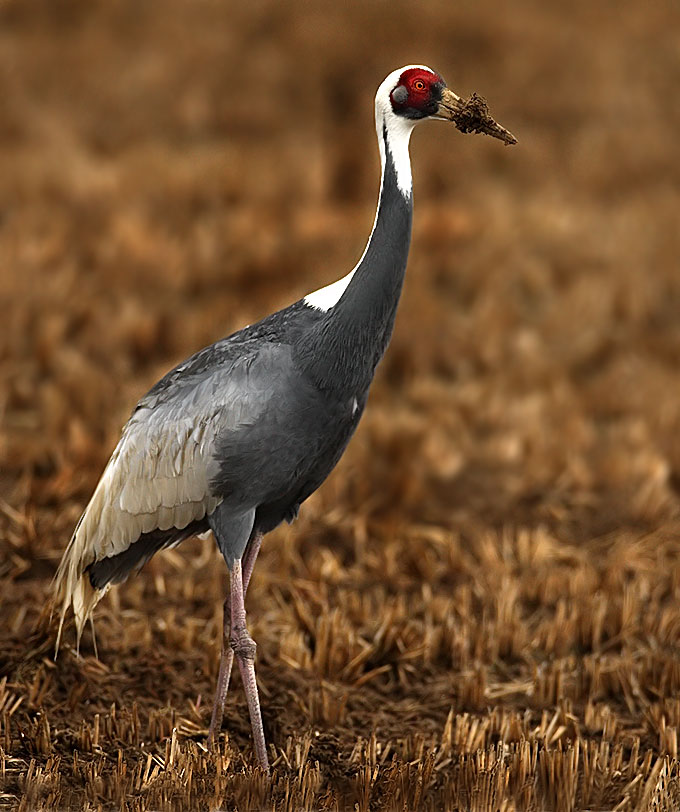
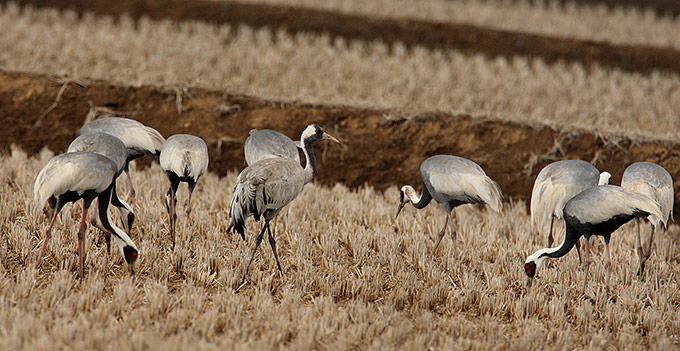
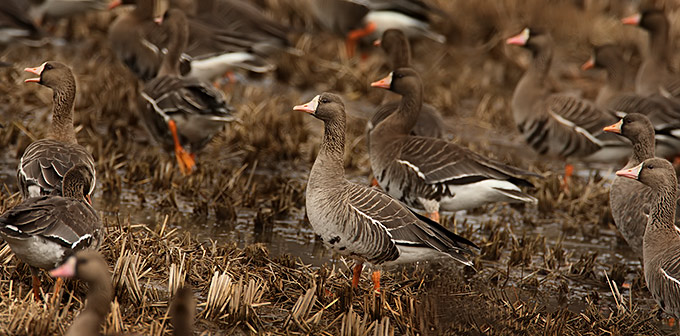


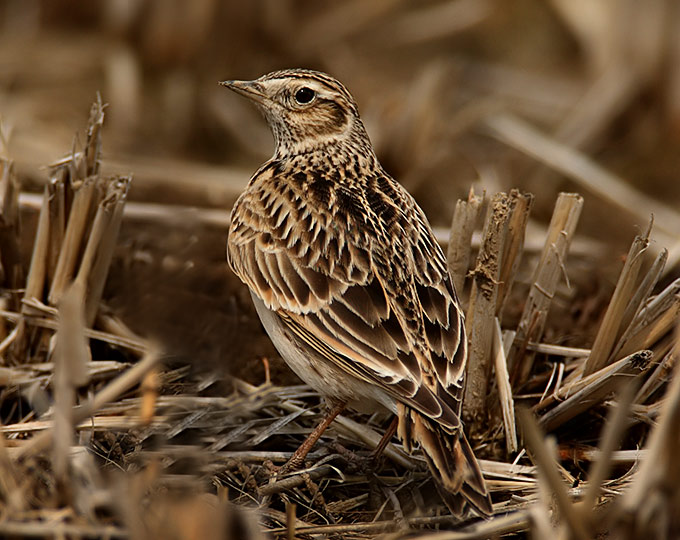
Songdo, Seoul, March 22
Mongolian Gulls appear to be nest-building once more at their favoured site, with several pairs already guarding their rudimentary straw constructions. Inthe brackish area,up to 15 Pallas's Reed Bunting, a Winter Wren and a Common Buzzard loitering over the reeds, also 4 Olive-backed Pipit and several singing Far Eastern Lark.<
On the mudflat, a very low spring equinox high tide still left large areas of mud exposed at its peak: here 107 Far Eastern Curlew, 46 "Eastern" Oystercatcher, 3 Eurasian Curlew, 900+ Dunlin in swirling flock, a handful of Grey Plover, 1 Little ringed Plover and c.25 Kentish Plover.
200+ Saunders's Gull are mostly in their jet-black hoods and showing restless courtship chases: single numbers of Common, Heuglins, Vega and Black-headed Gulls are also hanging around. Other winter leftovers included 2 Common Shelduck and bundles of Shoveler ducks.



Seosan, March 21
Warm and dusty dry conditions at Seosan: relatively sparse numbers of birds; geese (White-fronted and Bean) for instance seem fewer than similar dates in the past. Highlights included 2 Hen Harriers, 1 Upland Buzzard, 1 Oriental White Stork, a “small” flock of about 500 Baikal Teal, 30 Eurasian Spoonbills, 45 Hooded Cranes, 4 Common (Eurasian) Starlings along with several White-cheeked Starlings and, at various spots, a few Pallas’ Reed Buntings.
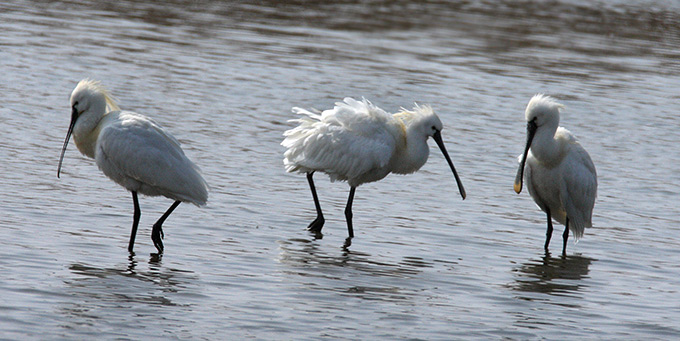
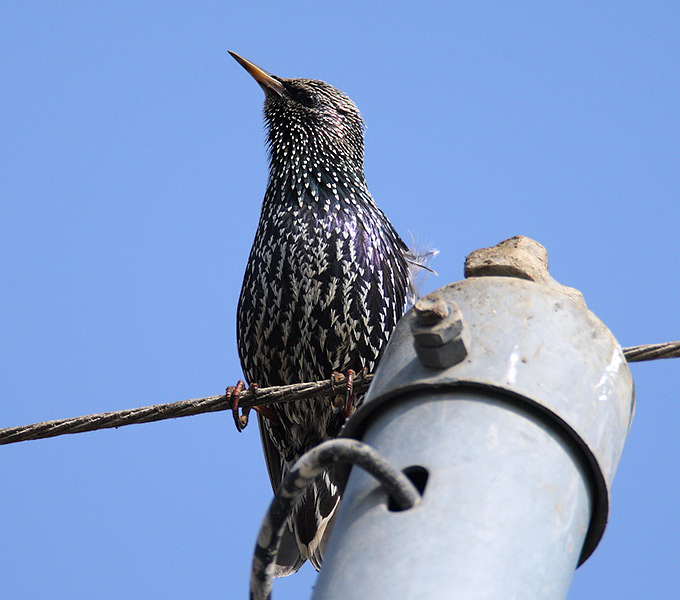
Jungnang Stream, Seoul, March 21
At the confluence of the Jungnang and Han rivers only c.200 Tufted Duck were assembled. Former years at this time have seen counts of thousands- perhaps the reduction is due to the increase in motorboats and windsurfers plying the water, as well as the recent dredging project.
Otherwise, Little Ringed Plovers are now in residence, and up to 100 Great Cormorant. Mongolian Gull linger on, with 20+ Gadwall and only single numbers of other waterfowl such as Pintail and the ubiquitous Spot-billed Duck.


Heuksan Island, March 21
With the plan to head out to Gageo cut short by very strong winds, a couple of hours on Heuksan before the rain moved in. Very few birds in the hills and arable plots east of the main harbour, with best being 8 Barn Swallow (apparently the first individuals arrived on Heuksan as early as March 10th this year).
Socheong Island, March 20
In clear and warm sunshine, 25 White-winged and two American Scoter offshore. Again very good numbers of common migrants, including it is presumed many of the Great Tit on the island, and several species of note included two new Chinese Blackbird, one new Red-billed Starling, a japonicus Japanese White-eye and scarcest at the national level one Common Redpoll heard, mixed in with a flock of Eurasian Siskin.
Namhansan, March 20
A late afternoon return trip to Namhansan found most of the same species as a few days previous with the addition of a cock and hen Hazel Grouse.


Socheong Island, March 18
With dense and cold fog only starting to clear late in the afternoon, limited time spent in the field. However, large numbers of birds present, including c 450 Eurasian Siskin and 30+ leucopsis White Wagtail. Other species of note included a scattering of Hoopoe (6 or 7 in total), the Chinese Grey Shrike and 9 Light-vented Bulbul still, a female Chinese Blackbird, 4 Siberian Stonechat, and a drake Mandarin Duck flying out from the stream in S Valley.

Incheon-Socheong Island, March 17
In very misty and hazy conditions following several days of Yellow Dust, a trip out to Socheong for seabirds and early spring migrants. From the ferry, very few seabirds, but one Yellow-billed Loon. On the island in very warm weather (reaching 16C on Socheong, and 26C at one city on the mainland), 45 species and a good number of migrants, with best for the day being an adult White-tailed Eagle, two or three Upland Buzzard, a Chinese Grey Shrike, 2 Red-billed Starling, a Siberian Stonechat, 2 Japanese Quail, 2 Hoopoe, one Bohemian Waxwing (perhaps first for Socheong?) and 8 or 9 Light-vented Bulbul!Also present were good numbers of Pelagic Shag, many in stunning breeding plumage. According to a North American banding guide male Pelagics are bigger-billed than females (this via Park Jong-Gil). Few field-guides indicate this, nor do they show birds with such extensive red on the face - presumably the reason why sometimes the unrecorded and extremely unlikely-to-occur Red-faced Cormorant has sometimes been claimed?

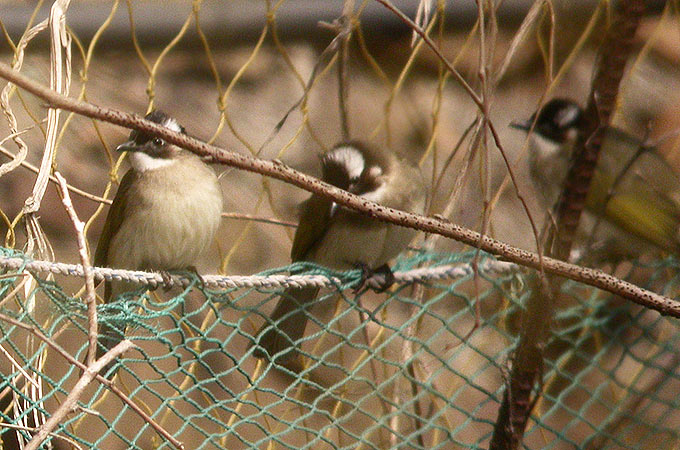

Namhansan, March 16
An afternoon walk through woods just about to burst into Spring finery; some vernal green budding on bushes but (as yet) no feeding Hazel Grouse in evidence; the woods were nevertheless laced through with active birds: Yellow-throated Buntings in abundance, some Rustic Buntings, loudly calling Eurasian Nuthatches everywhere, Varied, Marsh, Great and Long-tailed Tits, a calling Jay, a Eurasian Sparrowhawk, small numbers of Dusky, Naumann’s and Pale Thrushes, small fly-by flocks of Siskins and Hawfinches.

Pohang and Gyeongju, March 14 & 15
Despite cold and windy conditions, birding was good around Pohang. Notable species include a flock of 27 Japanese Waxwing in Pohang and 8 Russet Sparrow further up the coast. East of Gyeongju, a small gulley yielded Long-tailed Rosefinch and 4 Siberian Accentor.
Yanggu, Yangyang and Sokcho, March 15
On Tuesday 10 March, I saw 31 Rooks roosting on powerlines as I was walking to Yanggu middle school in the morning. There are still several hundred White-fronted Geese feeding on spilt grain in the rice around here at the moment.
On Saturday morning, 14 March, I walked along Namdae Cheon from the coast back to Yangyang. There was a very strong northwest wind blowing so birds were quite hard to locate and using the scope was quite difficult. I saw over 400 Great Cormorants, Mallards, Spot-billed Ducks, Common Mergansers, Greater Scaups, Common Teals, Gadwalls, Tufted Ducks, a Coot and Great Crested Grebes along the river. Small birds were hard to find, but I did find a few Pallas's Reed Buntings and a Little Ringed Plover. The latter was sheltering from the wind behind some flood debris. It's the first one I've seen in Korea this year.
After lunch on March 14, I had time to check out the birds at Cheongcho Lagoon in Sokcho. As I expected there were fair numbers of Great Cormorants, Mallards, Great Crested Grebes, Black-tailed Gulls and Black-headed Gulls on and around the lagoon. There were also some Greater Scaups, Tufted Ducks, Common Mergansers, Spot-billed Ducks, Wigeons, Common Teals, 10 Northern Lapwings, Grey Herons, Great Egrets, Eastern Great Egrets, a Little Egret, a Coot, a Little Grebe, 2 White Wagtails Motacilla alba ocularis, and a juvenile Whooper Swan. The Coot was seen feeding on a dead fish in the shallow water.
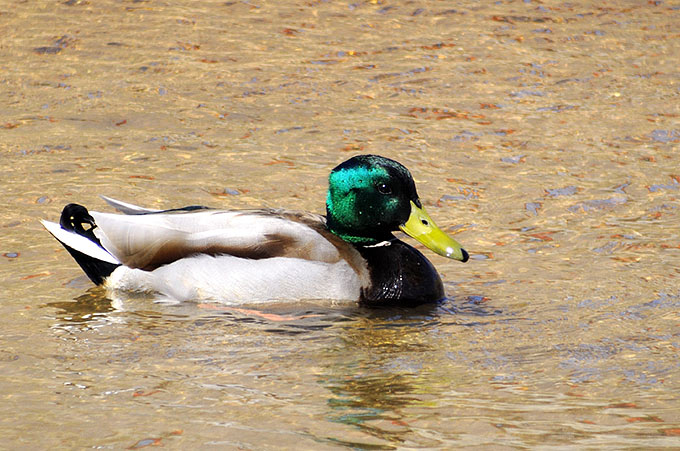




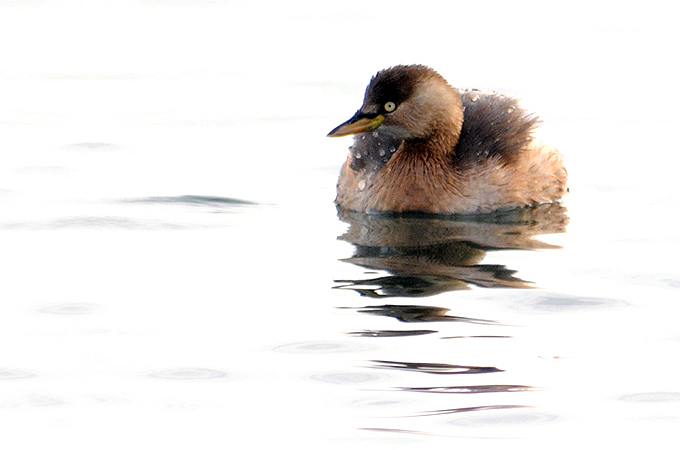

Okksu, March 15
Despite extensive reconstruction along both sides of the stream, I did manage to catch a glimpse of some species of note. At the mouth of the stream there were good numbers of Tufted Duck and Common Pochard. Outside their perimeter, there were 12 Smew. Midway up the stream noted highlights were 1 Eurasian Wigeon, 1 Winter Wren, 5 male Common Teal aggressively circling 1 female, and some pleasantly accommodating lugens White Wagtail and Northern Shoveler.

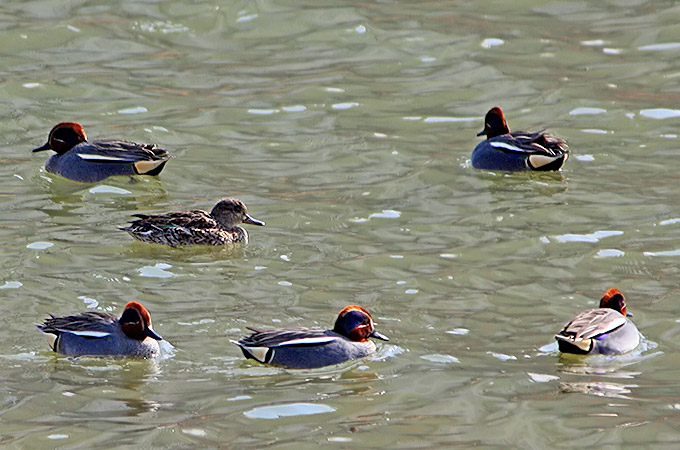


Imjingak and area, March 14
A brisk clear day north of Seoul: several hundred White-fronted Geese and much smaller numbers of Bean Geese, a White-tailed Eagle, 30+ Rustic Buntings, 6 Hawfinches, a single Eurasian Sparrowhawk and 4 White-naped Cranes in the surrounding fields; I then met up with Damee and her mom, both experts on birds and conservation issues in the Paju area; we visited the picturesque “Alder Tree Area” where Redpolls have been staying but found only single Hawfinch and Wren; we did find 3 Eurasian Eagle-Owls (with one of these calling) at traditional sites. The other highlight was at least 600 Swan Geese and 5 more White-naped Cranes at two hurried stops along the Han-Imjin highway.


Aham-do, March 14
Despite the last cold snap of winter (temperatures of only 1 degree celsius), incoming waders on the mud comprised a good scattering of Kentish Plover, Dunlin, and 1 Far Eastern Curlew.
On the golf course, handfuls of Olive-backed Pipit, Grey-capped Greenfinch, Yellow-throated Buntings, 2 Daurian Redstart and 2 Goldcrest.
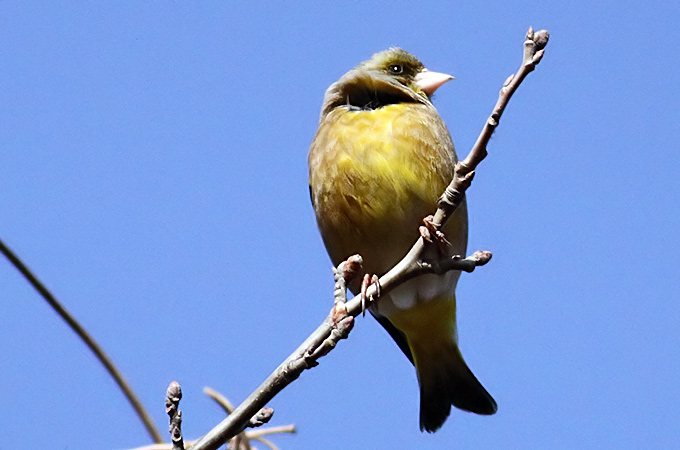



Northeast Coast, March 7 & 8
March 7 with Im Kwang Wan. Good weather with relatively calm waters but no alcids in evidence. Grebes (Great Crested, Red-necked, Black-necked, and a couple Horned) dotted the sea; other birds were a few Harlequin Ducks, Wigeons, Goldeneyes, Red-breasted Mergansers and Arctic Loons. Highlight was a Yellow-billed Loon, a long-staying individual found a week before by Dr. Shim Kyu Sik, who joined us on March 8. We took a boat out of Daejin: great weather and still-calmer seas but very few alcids. Not a single Ancient Murrelet appeared, but highlights were one (maybe two if not the same bird) Rhinocerous Auklets and the same count of Spectacled Guillemot. Other birds of note included several Glaucous Gulls and yet more (4) Horned Grebes.
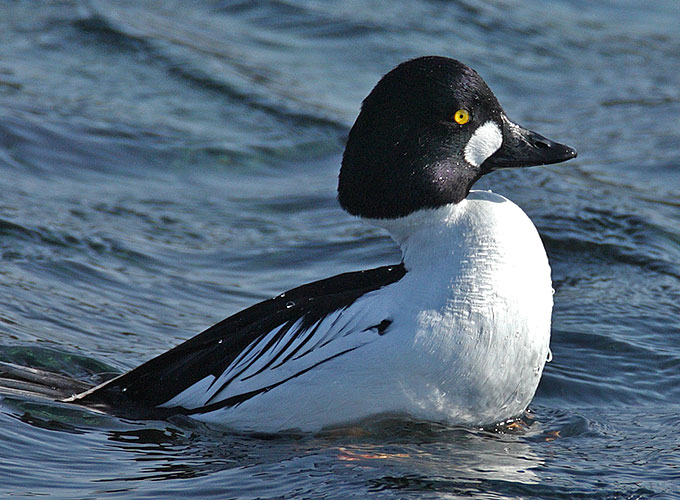
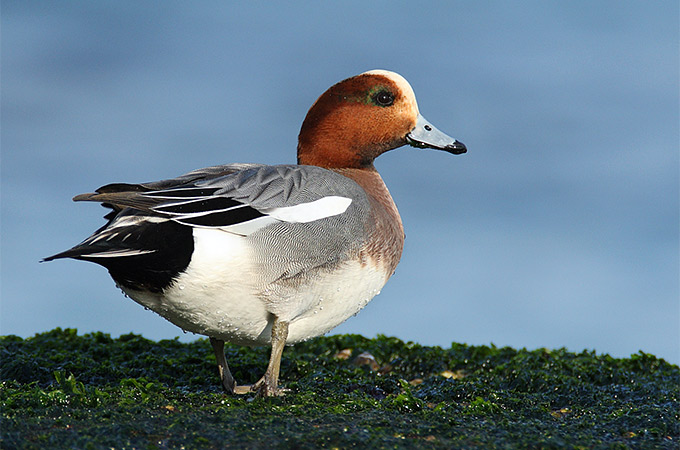

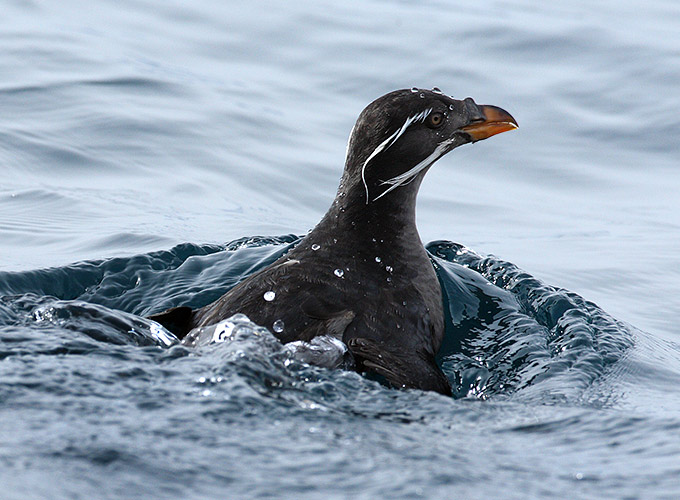

Yanggu, hill forest and wetlands, March 7 & 8
I spent this weekend in Yanggu. Saturday 7 March I went for a walk along the ridgeline of Bibong Mountain, the hills east of Yanggu Eup. The birds I heard and saw were common species, Great Tits, Coal Tits, Marsh Tits, Varied Tits, Long-tailed Tits, Goldcrest, Bulbuls, Great spotted Woodpecker and Japanese Pygmy Woodpecker.
Sunday 8 March I had a look along the river and down to the new dam area northwest of town where the water level is now very low. Most common were Spot-billed Ducks, Mallards, Common Mergansers and Grey Herons. Many of the herons are now showing breeding colours. I also saw some Common Teal, 2 Eurasian Wigeons and 2 Gadwalls. Over the dam area I found 4 White-tailed Sea Eagles, 2 adults and 2 juveniles. The eagles caused quite a stir with the Grey Herons, the latter all taking flight when one of the eagles flew overhead.
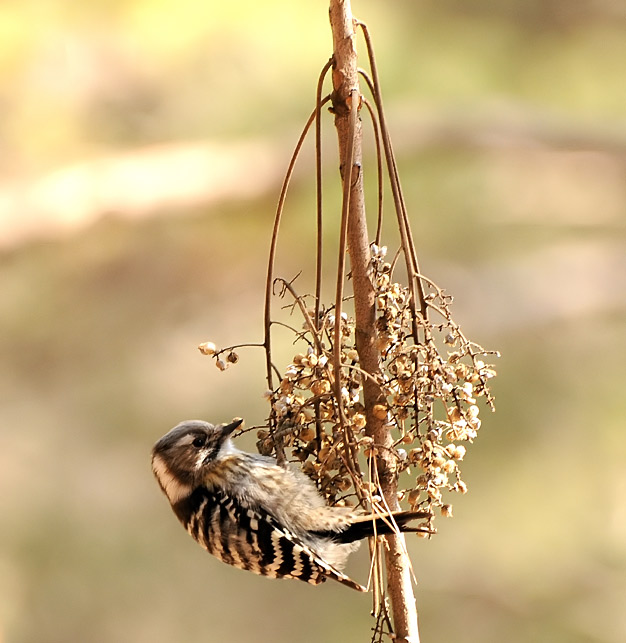

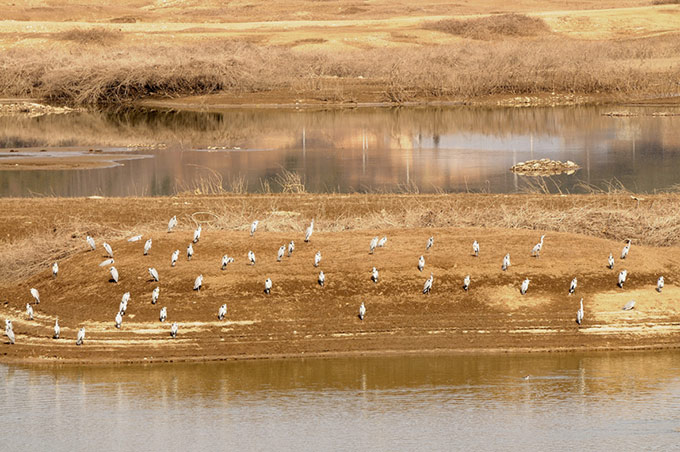

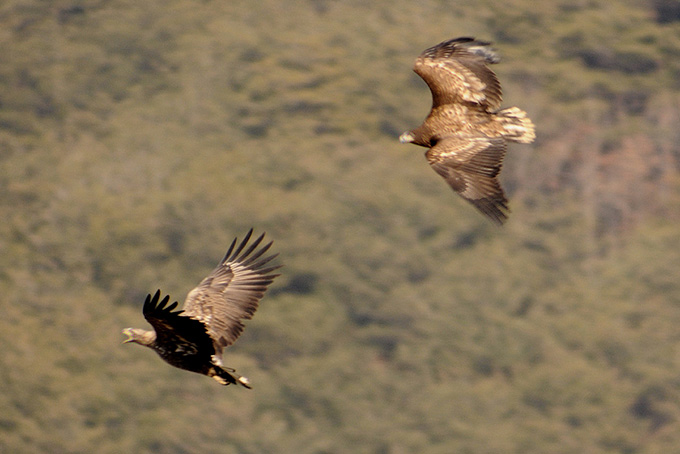

Uiwang, March 8
Sadly the two rivers entering the reservoir, formerly meandering avenues of willow trees and bullrushes, have been bulldozed and converted into concrete channels, entailing a significant loss of habitat for this site.
Signs of spring are everywhere- a bouncing flock of at least 40 summer-type leucopsis White Wagtail have arrived, a restless flock of up to 50 (Northern or Far Eastern?) Skylark are perhaps readying themselves to leave. A single Grey Starling is first of the season,9 Great Crested Grebe are all in breeding head-dress, and Shovelers are acting out their clockwise merry-go-round courtship routines.
Winter hangovers include 2 Whooper Swan and a Smew (both unusual for here), 1 Naummann's and 7 Dusky Thrush. otherwise present, 3 Common Snipe, pairs (as opposed to flocks) of the usual Oriental Turtle Dove and up to 20 Coot.
A flock of 270 Taiga Bean Geese Anser fabalis up-ended in the shallows, pulling up aquatic vegetation. Good views of their distinguishing features included almost flat foreheads sloping into extra-long bills, dark slate underwings showing very little contrast, and an elegant long-necked, almost swan-like profile.One showed a nearly completely orange-pink beak. Notably, a further flock of 390 Tundra Bean Geese Anser serrirostris that was present last week (and did not feed in the lake)- have completely departed.

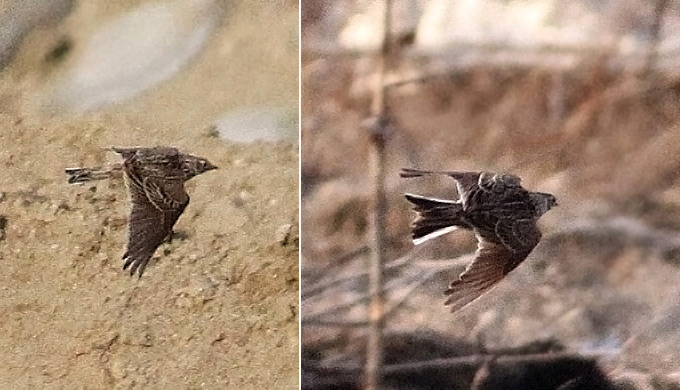
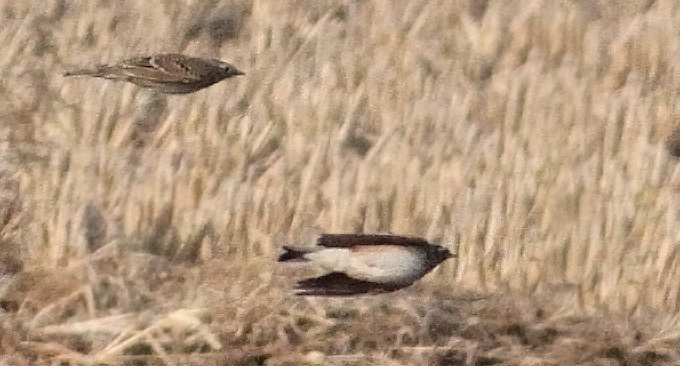

Namhansan, March 6
A short afternoon trip to Namhansan found good numbers of Rustic and Yellow-throated Buntings, 5 Hawfinches, a Wren, Common Buzzard and Eurasian Sparrowhawk, several Naumann’s Thrush and, best of all, an adult male Red-throated Thrush close but all too briefly seen. This was very possibly the same individual found by N.M. et al back on January 7.
Seosan, March 6
Highlights were mostly in mammalian form with 3 Amur leopard Cats, 6 Raccoon Dogs, 1 Siberian Weasel and 5 sightings of Korean Water Deer. The birds didn't disappoint though, with a good range of species. The highlights incuded a group of 14 Oriental White Stork in the early morning, a Eurasian Bittern, good numbers of Northern Lapwing, close-ups of Japanese Quail and 2 Common Crane.

Igidae, Busan, March 6
In mild and fairly bright conditions, 219 loons in one scan offshore (most too far out to identify to species; all closest birds were Red-throateds), and at least 5 Streaked Shearwater.
Seosan, February 28-March 4
At Seosan, at least 8 Oriental Stork on the 21st, 11 by 28th and apparently 15 by March 4th (via KSK), perhaps the largest concentration of this species nationwide so far this year.
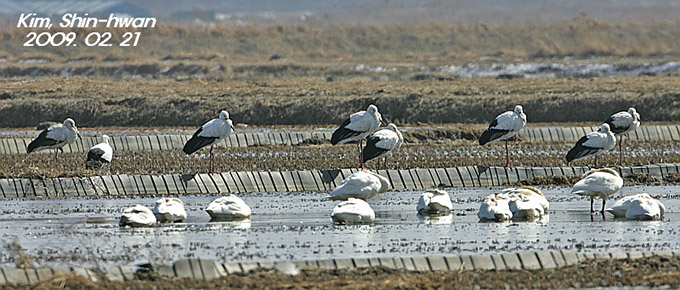
Further images at: http://www.birdskorea.or.kr/Forum/Birding/4215
Imjingak, March 2
An afternoon walking around the fields near Imjingak Station in rather warm and overcast weather: about 200 Bean Geese and maybe 800 White-fronted Geese noted; the largest flock of the latter held one Lesser White-fronted Goose. Getting near enough for a good picture would have almost certainly flushed the flock, so I forbore. Other birds were a few Cinereous Vultures, a half-dozen Hawfinches, and a small flock of Yellow-throated Buntings.
Beomosa Temple, March 1

Photo © Joseph Bieksza
It was a wonderful spring day near the temple and the North Gate. Apart from the usual assortment of Tits, highlights were as follows: 1 Winter Wren, 6 Meadow Bunting, and 1 Alpine Accentor.
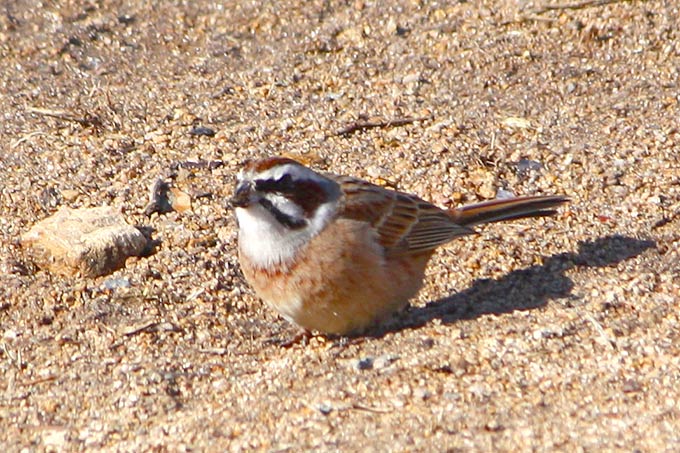
Paldang, March 1
With the river abnormally high, presumably due to spring thaw and meltwater, and unseasonally warm weather, markedly few winter waterfowl present, for example only 2 Whooper Swan, but unusually for here a notable influx of 310 Tundra Bean Geese and several Red-breasted Merganser.
Squabbling over some carrion were 5 White-tailed Eagle with also in the area 4 Cinereous Vulture, a Peregrine and 1 Siberian Accentor.
A motor-boat has ominously appeared on this stretch and developers seem at least to be extending some sort of pier into the middle of the river. Such disturbances may have ruffled the composure of the adult Stellers Sea Eagle, who ascended until only a speck in the sky before powering away far into the distance.





